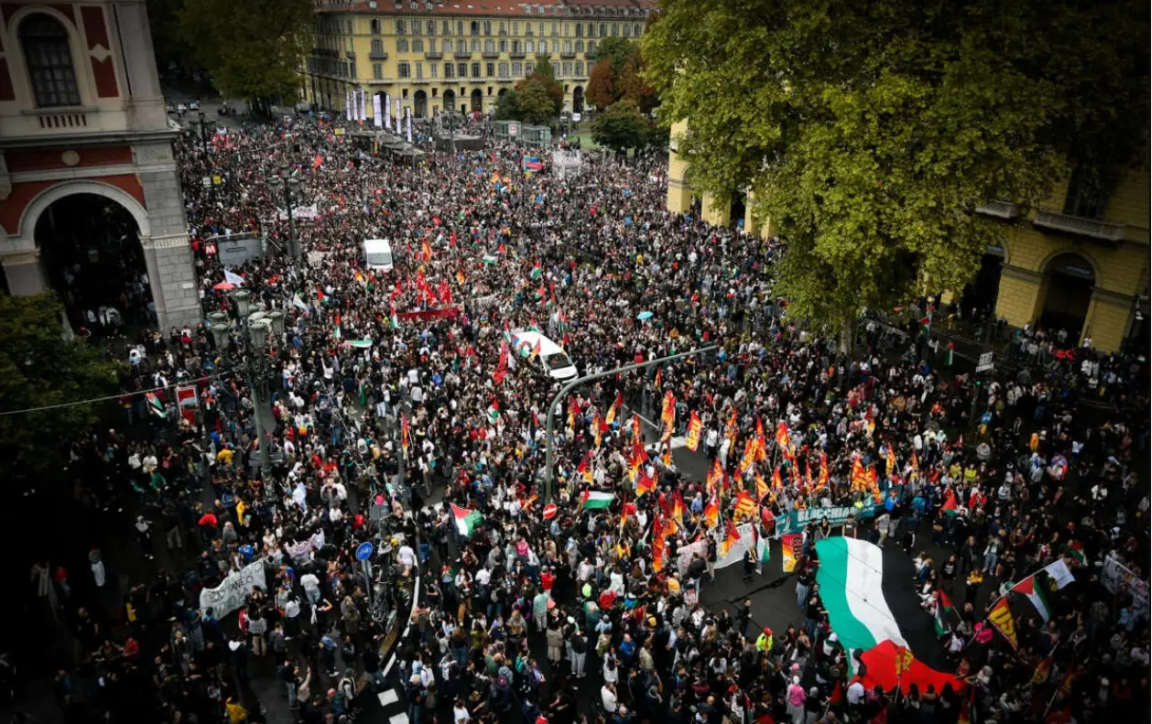The history of capitalism is the history of revolt. Throughout the 19th, 20th and now the 21st centuries the capitalist system has been wracked by crises during which the normal functioning of the system is halted, leaving millions of ordinary people with no option other than to rise up. Workers of course, are a wellspring of resistance to the capitalist system and will be central actors in its overthrow. But revolt against the system comes at the same time from innumerous directions. The struggles of students and youth are one such source of revolt, one that has in many times and places made an important contribution the wider struggle against the whole capitalist system.
It’s evident today of course, that students are not innately radical. But radicalism seldom begins all at once. More usually it begins to coalesce around more immediate interests. Hundreds joined protests at Auckland University in 1965 to demand government action on university building programs, bursaries and student residences. Students at Otago began by challenging draconian university regulations that prohibited mixed flatting in 1967. Actions on welfare issues continued to be a theme throughout the high points of student radicalism during the late 60s and 70s, as students campaigned against ‘slumlords’ and defended academic freedom from the incursions of the SIS.
The growing radicalism of students in mid-60s New Zealand reflected an international trend. “Student movements” were developing across the Western world – in Germany, Italy, France, Britain and the United States, to mention only some of the most well-known examples. Fuelling these movements were massive and permanent changes in global capitalism. As the capitalist system entered a new era of expansion after the Great Depression and Second World War industry became steadily more technologically advanced and so the demand for highly-qualified labour increased. To provide for this, the universities were massively expanded – but often without constructing additional facilities. At the University of Rome for example – one of the centres of the global student movement – 60,000 students were squeezed into facilities designed to educate a mere 5,000.
If rocketing numbers, conservative and out-dated administrations and poor service provision combined to fuel the fire of student protest, it rapidly spilled out of its initial bounds. As the student movements grew, they sought inspiration from movements of the oppressed fighting other aspects of capitalist system – especially the anti-colonial and national liberation movements. Solidarity and anti-imperialist movements flowered on campuses around the world – most visibly in the demonstrations against the Vietnam War. Groups such as SNCC and CORE played a key role in organizing students in the American Civil Rights movement, bringing activists from the north of the United States to participate in actions in the segregated south and student activists were an important component of the anti-Apartheid movement in New Zealand, from the first demonstrations in the 1960s to the anti-tour protests of 1981.
Solidarity with the struggles of other oppressed peoples became part of the legacy of the student movement because of the nature of students’ own grievances. While confined to the universities and institutes of higher education, “student issues” cannot be solved within the framework of the university because they have their roots in the capitalist structure of society – that is outside of the university. Struggle around immediate grievances thus led students to question the existing society more generally. Where they did so, many joined radical organizations – or formed their own. Groups like the June Committee and the Progressive Left in Dunedin took part in organizing some of the most militant actions against the Vietnam War, and in 1969 students from Victoria University in Wellington founded the Socialist Action League. Internationally, left-wing student activists played an important role in the working-class struggles that erupted in every country at the end of the 1960s. Student demonstrations in Paris during May 1968 became generalized into a general strike involving millions of workers and lasting nearly a month; and activists from the campuses in Italy were able to successfully able to unite with factory based militants and lay the foundations for a generalized upsurge that shook Italian society to its core. Organized in revolutionary Marxist parties like Lotta Continua, the students and factory youth became the mechanism through which socialist ideas were able to reach a genuinely mass audience.
The student movement – like all movements for radical change – was of course hit hard by the attack of the ruling class and the advance of the neo-liberal state during the 1980s and 1990s. But it has not been finally vanquished. Protest re-emerged on the campuses in the 1990s when market reforms in tertiary education led to skyrocketing fees. While the protests subsided in after the election of the Labour-led government in 1999, many of the same grievances remain. Compare today’s video-linked lectures with the Belgian Trotskyist Ernest Mandel’s observations in the 1960s: “Thousands of students are obliged to listen to professors through sound systems. They cannot talk with their professors or have any contact, normal change of opinion, or dialogue.” The new role of the universities in the capitalist system is not a temporary or one off phenomenon, and as new protest movements emerge – from Britain to Chile, Québec and Hong Kong, the potential for socialist students and youth to lead the radicalization of a new generation is enormous









